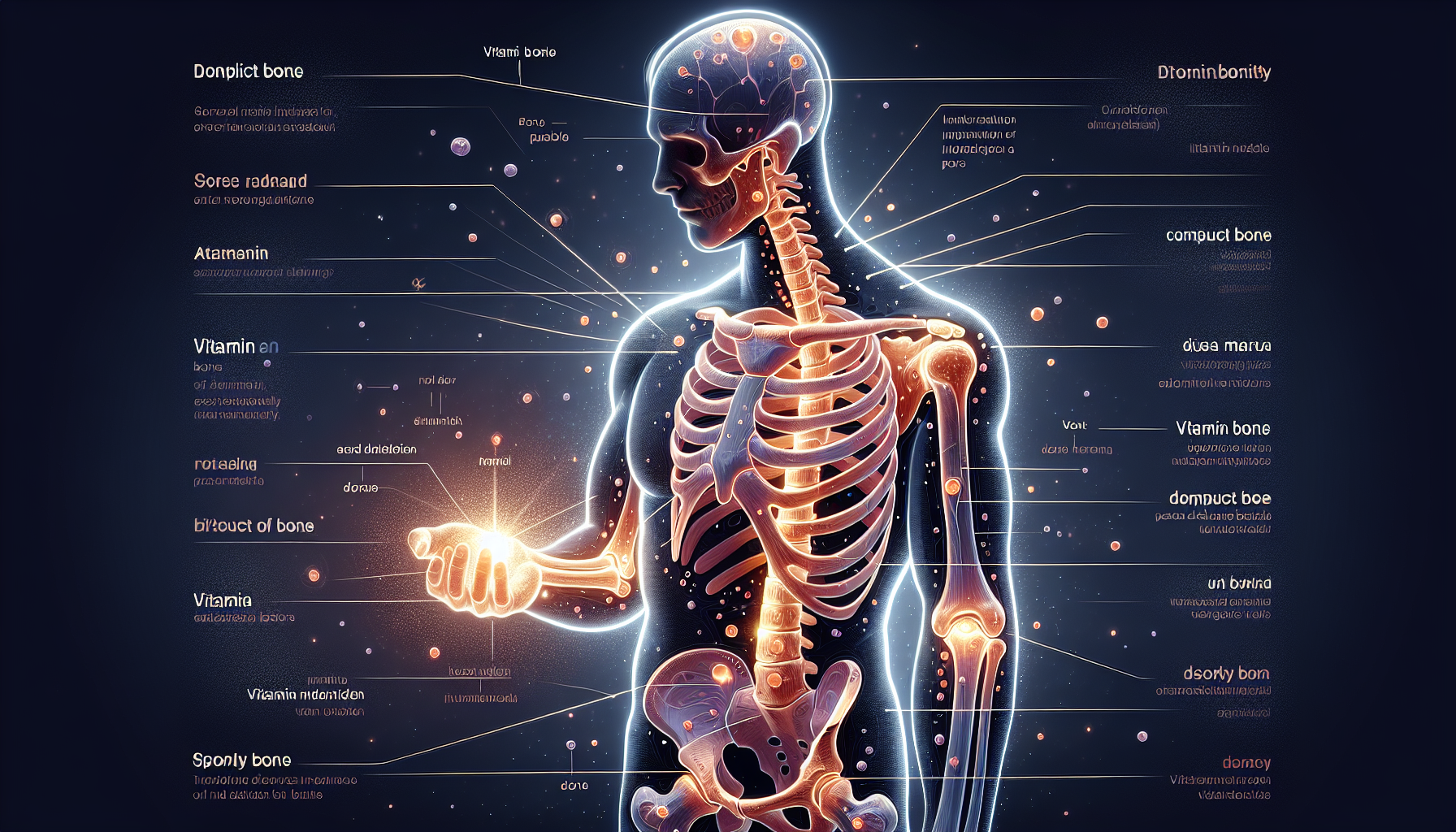Vitamin A is widely acknowledged for its crucial role in maintaining vision and immune function, but its influence on bone health is a lesser-known facet that deserves attention. This fat-soluble vitamin is vital for bone growth and remodeling, a process where old bone tissue is replaced by new. Understanding its impact on bone health is essential for maintaining a strong skeletal system throughout our lives.
The Role of Vitamin A in Bone Metabolism
Bone metabolism is a balance between bone resorption (the process where bone is broken down) and bone formation. Vitamin A plays a dual role in this process. It helps osteoblasts (bone-forming cells) to mature and deposit new bone tissue. Conversely, it also influences the activity of osteoclasts (cells that break down bone tissue), which can lead to increased bone resorption when Vitamin A levels are excessive.
Research suggests that both deficiencies and high doses of Vitamin A can adversely affect bone health. A deficiency can impede bone growth and repair, while an excess, typically from supplementation, can lead to bone thinning and increased fracture risk. Therefore, maintaining appropriate levels of Vitamin A is crucial for optimal bone health.
Dietary Sources and Recommended Intake
Vitamin A comes in two forms: preformed Vitamin A, found in animal products such as meat, fish, poultry, and dairy; and provitamin A carotenoids, found in plant-based foods like fruits and vegetables. The most well-known carotenoid is beta-carotene, which the body can convert into Vitamin A.
The recommended dietary allowance (RDA) for Vitamin A varies by age, sex, and life stage. For most adults, the RDA is 900 micrograms (mcg) for men and 700 mcg for women. Pregnant and lactating women require more. It’s important to consult healthcare providers to determine the right amount for individual needs.
Vitamin A and Bone Density
Bone density is a measure of the amount of minerals, primarily calcium and phosphorus, present in a given volume of bone. It is a crucial indicator of bone strength and overall skeletal health. Studies have shown that both deficient and excessive levels of Vitamin A can negatively affect bone density. Ensuring a balanced intake of Vitamin A is necessary to maintain healthy bone density levels, which can be supported by a diet rich in diverse sources of the vitamin.
Linking Vitamin A and Osteoporosis Prevention
Osteoporosis is a condition characterized by weakened bones that are more susceptible to fractures. Adequate Vitamin A intake is important for reducing the risk of developing osteoporosis. However, it’s essential to avoid excessive amounts, as they can contribute to bone loss. For those interested in osteoporosis prevention, considering the Impact of Antioxidants on Osteoporosis Prevention can provide additional insights into how a balanced diet can contribute to bone health.
Vitamin A Absorption and Utilization
The body’s ability to absorb and utilize Vitamin A can be affected by various factors, including dietary composition, other nutrient levels, and overall health status. For instance, the presence of dietary fat enhances the absorption of Vitamin A, highlighting the importance of a balanced diet. Moreover, the body’s need for Vitamin A can be influenced by health conditions that affect nutrient absorption, such as digestive health concerns. To gain further understanding, exploring topics on Digestive Health can be beneficial.
Vitamin A and Other Nutrients in Bone Health
Vitamin A doesn’t work in isolation; it interacts with other nutrients like Vitamin D, calcium, and phosphorus, which are also vital for bone health. For example, Vitamin D helps the body absorb calcium, which is directly related to maintaining bone density. Understanding these interactions is key to a holistic approach to bone health. Readers may also find value in learning about the Role of Boron in Bone Strength and Maintenance, as boron is another trace mineral involved in bone metabolism.
Potential Risks of Hypervitaminosis A
Hypervitaminosis A, a condition resulting from excessive Vitamin A intake, can lead to serious health issues, including detrimental effects on bone health. Symptoms can include bone pain and an increased risk of fractures. It’s important to be aware of the potential risks associated with overconsumption of Vitamin A, particularly through supplementation.
Safeguarding Bone Health Across Life Stages
Vitamin A’s influence on bone health is significant across various life stages. During growth, adequate Vitamin A is essential for proper bone development. In adulthood, maintaining the right balance supports bone density and remodeling. As one ages, it becomes even more critical to monitor Vitamin A intake to prevent bone density loss and related conditions. For those looking to delve deeper into age-related bone health strategies, the article on Preventing Bone Density Loss with Age offers targeted advice.
Current Research and Further Reading
The body of research on Vitamin A and bone health is continually growing. For those interested in exploring this topic further, here are several high-quality niche resources:
- The National Institutes of Health’s Office of Dietary Supplements provides detailed information on Vitamin A, including its role in health and recommended intakes.
- The International Osteoporosis Foundation’s website offers extensive resources on bone health, including the impact of different nutrients on bone density and osteoporosis risk.
- The American Society for Nutrition’s publication often features research on the interplay between nutrition and bone health, including studies focused on Vitamin A.
In conclusion, Vitamin A is an essential nutrient that plays a complex role in maintaining bone health. Both insufficient and excessive intakes can have negative consequences, making it important to achieve a balance. By including a variety of dietary sources of Vitamin A and being mindful of supplementation, individuals can support their bone health effectively throughout their lives.



